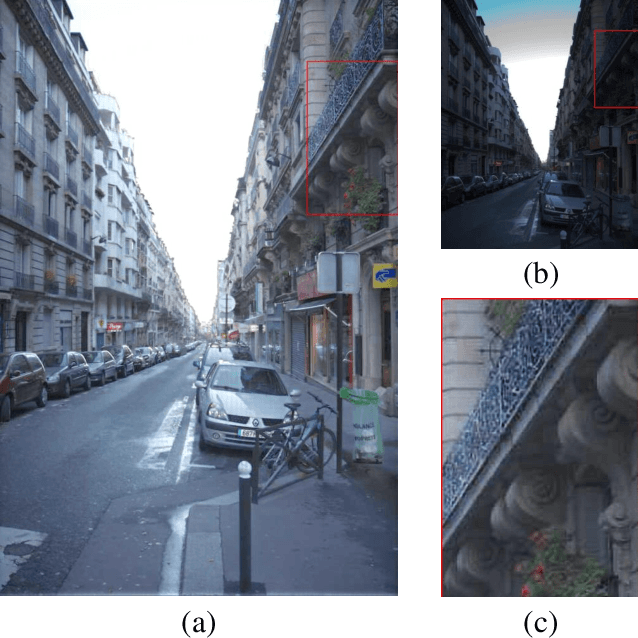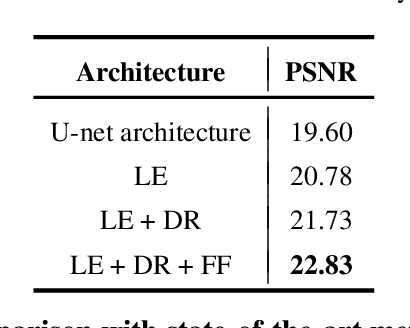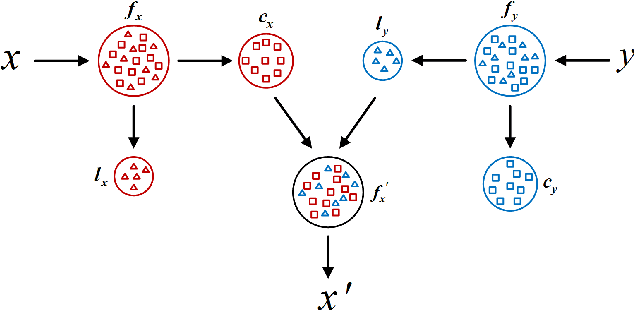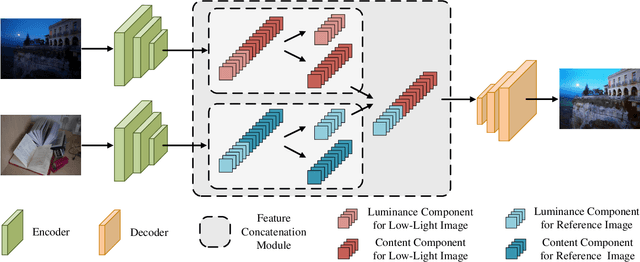Ya'nan Wang
Bridge the Vision Gap from Field to Command: A Deep Learning Network Enhancing Illumination and Details
Jan 20, 2021



Abstract:With the goal of tuning up the brightness, low-light image enhancement enjoys numerous applications, such as surveillance, remote sensing and computational photography. Images captured under low-light conditions often suffer from poor visibility and blur. Solely brightening the dark regions will inevitably amplify the blur, thus may lead to detail loss. In this paper, we propose a simple yet effective two-stream framework named NEID to tune up the brightness and enhance the details simultaneously without introducing many computational costs. Precisely, the proposed method consists of three parts: Light Enhancement (LE), Detail Refinement (DR) and Feature Fusing (FF) module, which can aggregate composite features oriented to multiple tasks based on channel attention mechanism. Extensive experiments conducted on several benchmark datasets demonstrate the efficacy of our method and its superiority over state-of-the-art methods.
Shed Various Lights on a Low-Light Image: Multi-Level Enhancement Guided by Arbitrary References
Jan 04, 2021



Abstract:It is suggested that low-light image enhancement realizes one-to-many mapping since we have different definitions of NORMAL-light given application scenarios or users' aesthetic. However, most existing methods ignore subjectivity of the task, and simply produce one result with fixed brightness. This paper proposes a neural network for multi-level low-light image enhancement, which is user-friendly to meet various requirements by selecting different images as brightness reference. Inspired by style transfer, our method decomposes an image into two low-coupling feature components in the latent space, which allows the concatenation feasibility of the content components from low-light images and the luminance components from reference images. In such a way, the network learns to extract scene-invariant and brightness-specific information from a set of image pairs instead of learning brightness differences. Moreover, information except for the brightness is preserved to the greatest extent to alleviate color distortion. Extensive results show strong capacity and superiority of our network against existing methods.
 Add to Chrome
Add to Chrome Add to Firefox
Add to Firefox Add to Edge
Add to Edge